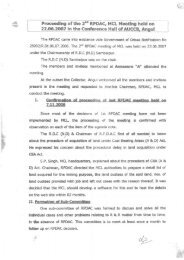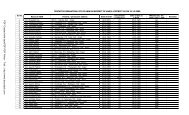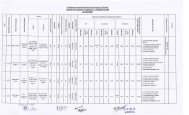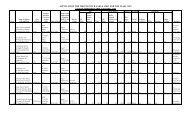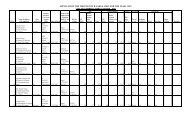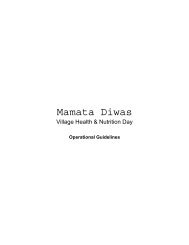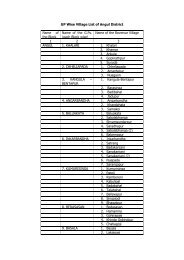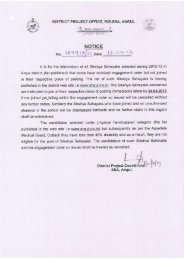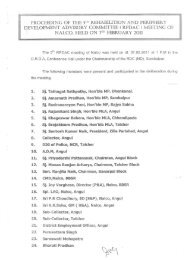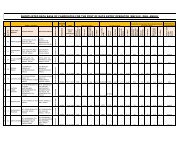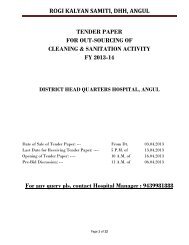SDMP Girls HS - Angul
SDMP Girls HS - Angul
SDMP Girls HS - Angul
You also want an ePaper? Increase the reach of your titles
YUMPU automatically turns print PDFs into web optimized ePapers that Google loves.
• If possible and safe (i.e. person is not a child or reduced consciousness) then replace the<br />
tooth gently into its socket, and bite down on a gauze pad or handkerchief to help keep it<br />
in place. Care must be taken not to swallow the tooth.<br />
• If the tooth cannot be reinserted then put it in whole milk or saliva, and control bleeding<br />
with a gauze pad inserted in the tooth socket with the person biting gently on the pad.<br />
• If the gums are bleeding, put cold water on a piece of gauze and push it between the lips<br />
and gums.<br />
• The person should see a dentist as soon as possible, ideally within 20 minutes, as the<br />
tooth begins to die after 15 minutes.<br />
If a primary tooth (likely if the child is under the age of 7) is knocked out or the gum injured:<br />
• Put on disposable gloves.<br />
• Control bleeding by soaking a piece of gauze in cold water and applying pressure to the<br />
site.<br />
• Treatment may not be necessary but the child should see a dentist to assess whether<br />
there is a need for realignment or the removal of a very loose tooth.<br />
Convulsions<br />
• A convulsion (violent, involuntary contraction or muscle spasm) can be caused by epilepsy<br />
or sudden illness.<br />
• Most convulsions are often followed by a period of unconsciousness or sometimes another<br />
convulsion.<br />
Treatment<br />
• Lay patient on ground in safe area.<br />
• Clear all objects away from the victim and place something soft under his head.<br />
• Do not place anything between his teeth or in his mouth.<br />
• Loosen tight clothing, particularly round the neck.<br />
• Do not give the victim any liquids.<br />
• Stay calm and keep the victim comfortable until help arrives.<br />
External bleeding<br />
• Use sterile disposable gloves, and face shield if possible.<br />
• Calm and reassure patient.<br />
• Lay patient down, to avoid fainting.<br />
21




